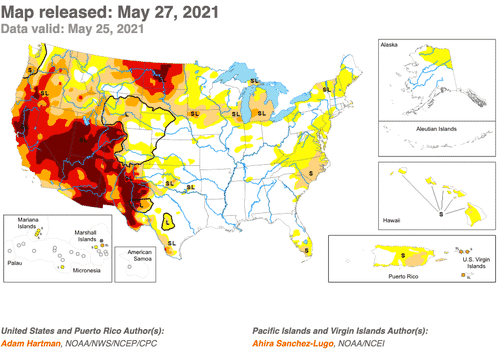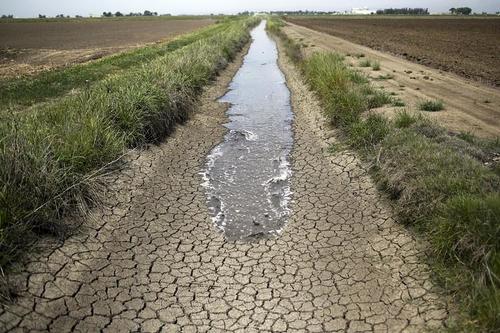We’ve documented (read here & here) this spring of a “megadrought” sweeping through the western half of the country and could be one of the worst in decades. This is troubling news because major water reservoirs have already dropped to dangerously low levels, cutting off access to farmers.
The latest US Drought Monitor map shows nearly the entire western half of the nation is experiencing some level of drought at this moment. Parts of the Southwest could be undergoing their second Dust Bowl as conditions continue to deteriorate.
According to Reuters, for farmers like Joe Del Bosque, located in Firebaugh, California, a third of his 2,000-acre farm is unseeded this spring due to extreme drought and the inability to source water.
About 40% of California’s 24.6 million acres of farmland is irrigated. State and federal agencies that regulate reservoirs and canals across the state do not have enough water to allocate to farmers. Many of them are leaving their fields unplanted as a result of the water shortage.
We’ve explained before, La Nina conditions are turbocharging droughts in North and South America.
Agriculture in the state counts for 2% of its GDP and employs hundreds of thousands of workers. The state is a top producer of berries, dairy products, nuts and vegetables.
Del Bosque told Reuters he’s “taking a big risk in planting crops and hoping the water gets here in time.”
Others are reducing crop acreage as there is simply no water to go around:
“I’m going to be reducing some of our almond acreages. I may be increasing some of our row crops, like tomatoes,” said Stuart Woolf, who operates 30,000 acres in Western Fresno County.
Woolf said about 30% or 9,000 acres would be fallow this growing season because of water shortages.
Del Bosque said he’s estimated to lose half a million dollars in income this year and lay off many of his 700 workers.
Ernest Conant, regional director of the Bureau of Reclamation, California-Great Basin region, the federal agency that manages dams, canals, and water allocations in the Western US, said, “we simply don’t have enough water to supply our agricultural users. We’re hopeful some water can be moved sooner than October, but there are no guarantees.”
Water shortages across Southwest are increasing as average crop development growth in these areas will likely be impacted this growing season. Hot air, gusty winds, and low humidity will accelerate drying conditions.
To call this a “plague” would be a significant understatement.
If arid conditions continue in the Southwest, there will be epic crop failures by the end of this year’s growing season. This suggests US food production could be impacted, fueling inflation at supermarkets.
Now Dust Bowl conditions are returning, and farmers, ranchers and local authorities can’t do anything about it.








